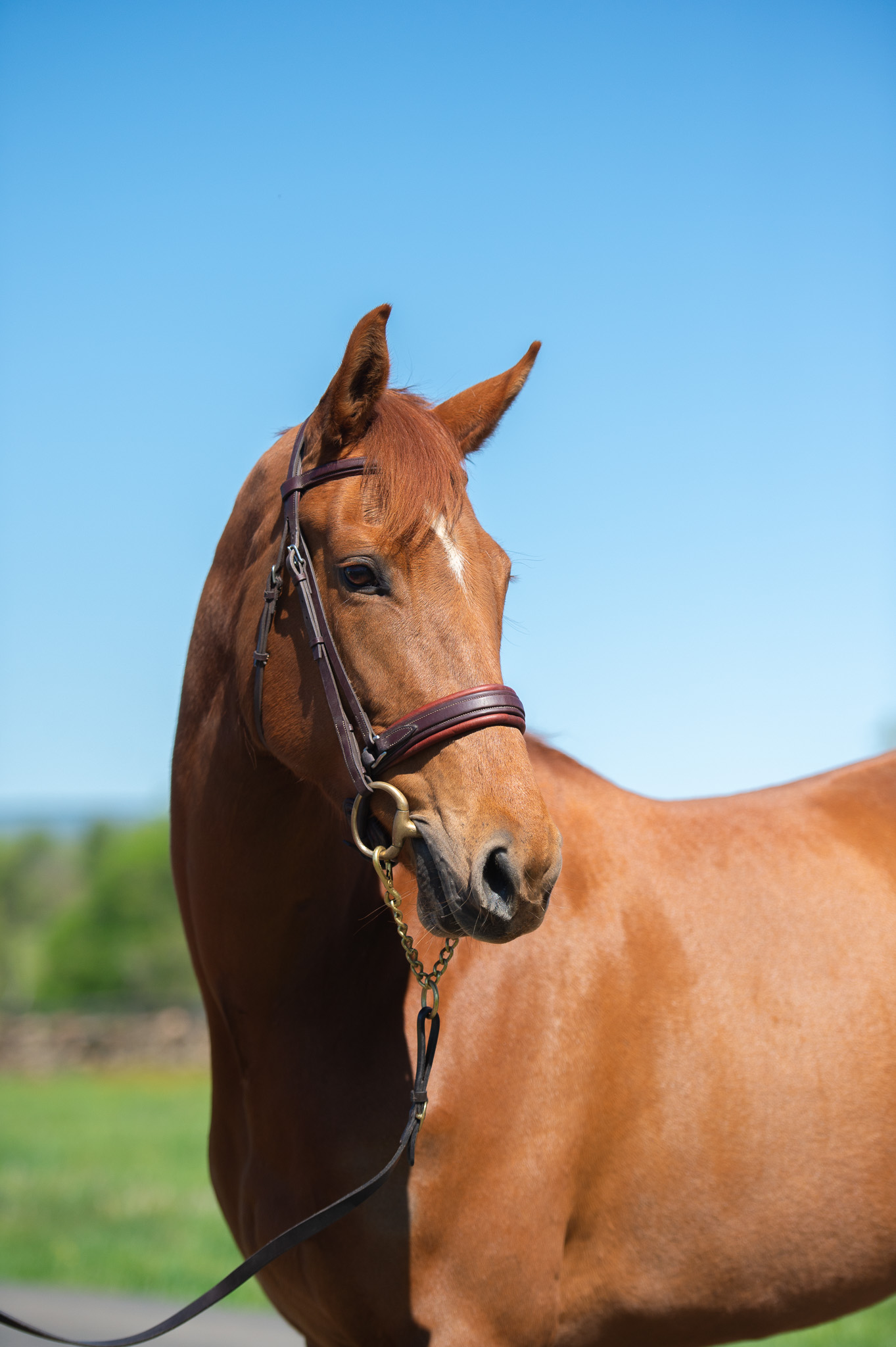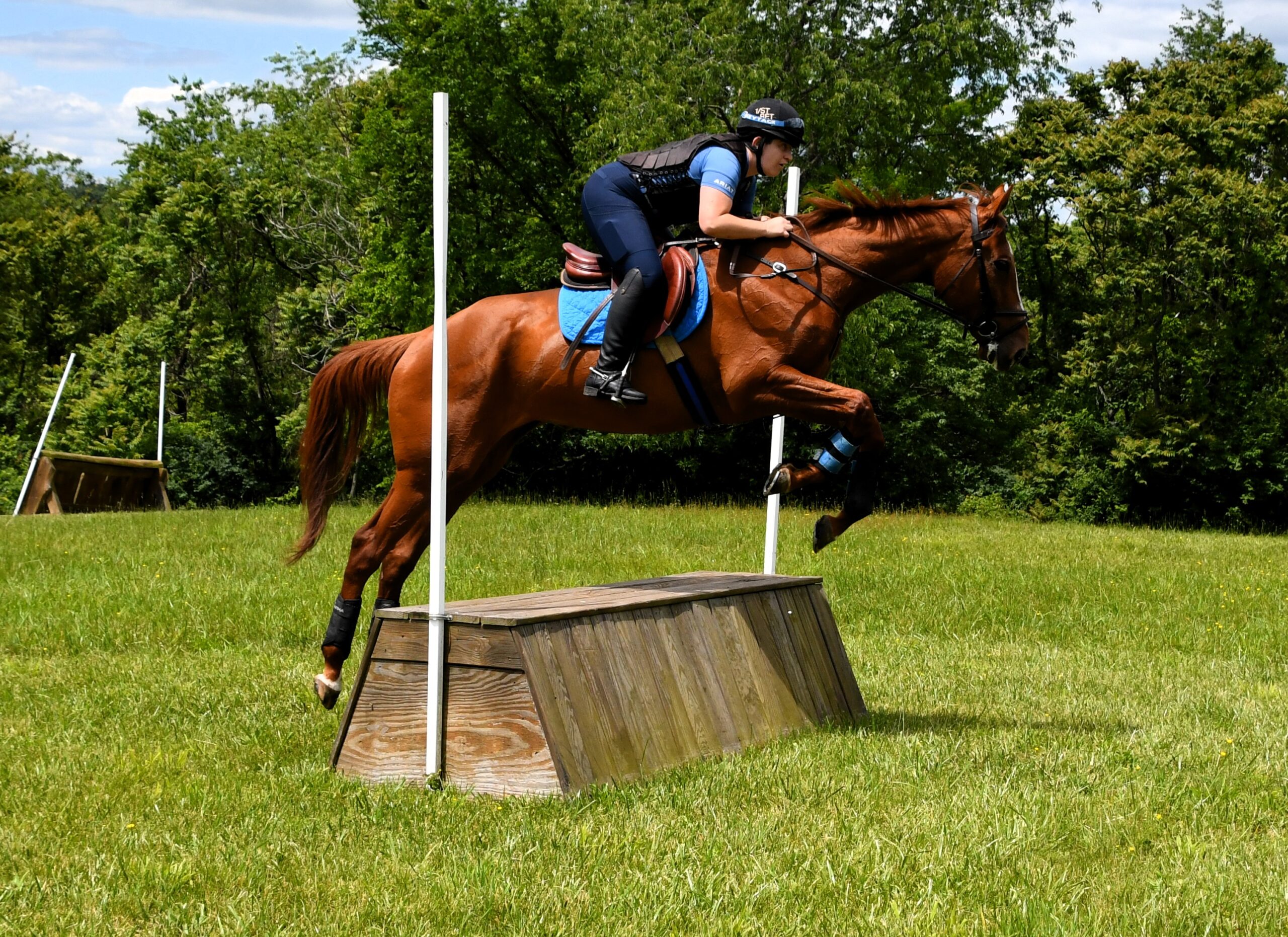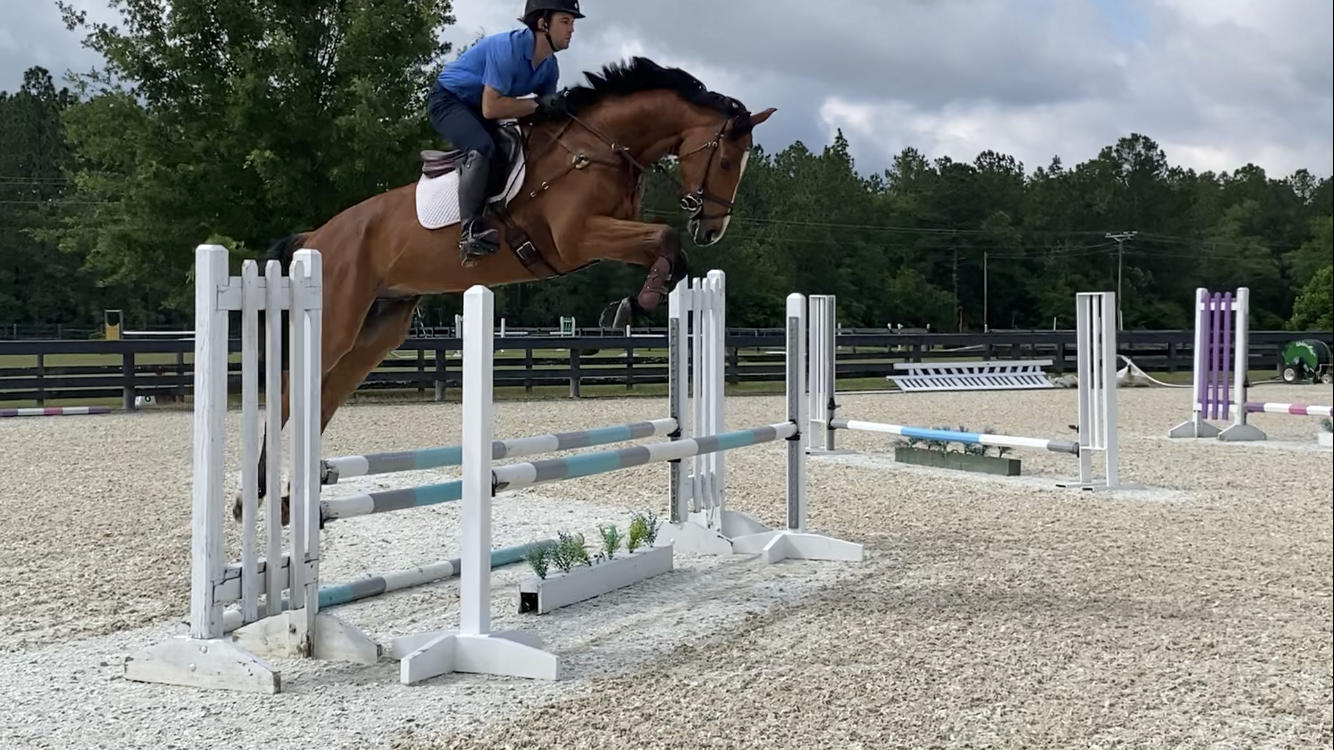
Developing both a physical and emotional connection with his horses is key to Luke’s mission and work. Photo by Winslow Photography.
One of the best parts of my job is working with young horses. Introducing horses to communication with people and watching them think and problem-solve is fascinating to me. My work within the beginning stages of horse-human interaction largely revolves around ground work, allowing the horse to understand what my body and voice cues mean, but also allowing them to have choice, especially in our first interactions.
Another favorite part of my job is researching (I get it, I’m a nerd!). I love to read, learn about experiences other trainers have had, and brainstorm new ideas and exercises to utilize. During one of my deep dives into research, a friend of mine suggested I take a look at Luke Gingerich’s work. Watching some of his bridleless rides and his work at liberty with his horses made me realize I just had to learn more.
Luke teaches liberty horsemanship, and competes in reining, ranch versatility, and freestyle reining, where he incorporates both bridleless reining and liberty work into his performances. As someone who is detail oriented, Luke was drawn to the “relationship and level of communication that liberty horsemanship displays, and how subtle and refined [the training] can become.” He believes that the “finesse, trust, and communication this requires is a great way to test [the] relationship and showcase what [has been] built together.”
View this post on Instagram
Luke experienced an eye-opening moment early on in his liberty career with his partner, Rio. “After introducing positive reinforcement and clicker training, I incorporated it into my liberty work. When working Rio on a liberty circle, I reinforced the moments where he was soft and collected. Before long, he was holding a consistent stretch at liberty”.
This experience with Rio opened Luke’s eyes to the opportunity to combine liberty work, positive reinforcement (such as clicker training), and negative reinforcement (such as pressure and release) to help horses make the choice to be soft, confident, and controlled, even in the face of pressure.
Training horses at liberty does leave a choice for the horse to engage, or disengage. Providing horses with the space for choice also leaves them with the space and responsibility to develop physical and emotional control, even under pressure.
Horses are bound to face pressure in life — we all are! Whether the pressure is coming from a human (such as a cue to go faster or move over) or an environmental factor out of our control (the weather, traffic noise, crowds, etc.) horses will experience situations where they’re challenged, and their focus and control is tested.

In addition to ridden work, Luke works with his horses at liberty on the ground. Photo by Winslow Photography.
This is where Luke believes liberty work can come into handy. By giving horses the space to learn how to physically and emotionally control themselves, while encouraging and marking the desired behavior, and utilizing pressure and release to show that working through pressure can result in comfort, horses can develop trust and relaxation through stressful situations.
When horses learn that they can work within pressure, and even influence pressure with their response, (such as stepping sideways, resulting in a person releasing their cue), they develop the tool to think through and problem-solve while maintaining mental relaxation.
“Much of my liberty work is built on the basis that a horse naturally wants to mirror, or be in sync with, other members of the herd. I channel that desire and natural instinct to read subtle shifts and changes in body language, to be able to create complex maneuvers and behaviors that my horses become capable of doing at liberty with me.”
“The combination of both the mental and emotional connection, combined with the physical body control and muscle memory that [liberty] work creates can then be carried directly over into riding in many other competitive disciplines,” Luke believes.
Moving forward, Luke would be interested to see liberty horsemanship develop into more of a foundational piece of training horses, for ridden and ground work. Communicating with horses in this capacity has allowed Luke to connect with them on a physical and emotional level, and he now works to help other horse and rider partnerships to experience this connection.

Luke and his mare Chloe performing bridleless. Photo by Winslow Photography.
Additionally, as more people are aware of or participate in this work, opportunities to showcase the development of the horse/rider partnership can assist in further introducing this approach, and help spur collaboration among trainers.
While he’s already achieved numerous goals, Luke aims to continue developing as a liberty horsemanship trainer and as a competitive rider, pushed by the question: How adjustable can myself and my horse be to differentiate between disciplines and explore new challenges?
To Luke, this looks like expanding into bridleless dressage, showing in western dressage, and increasing his and his horses’ body control through higher level movements on the ground. If we each ask ourselves this question, what opportunities open up to explore a new physical and emotional connection with our own horses?






















